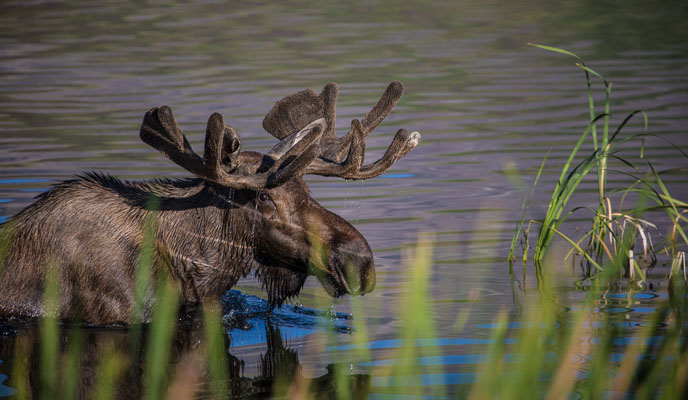Last updated: December 29, 2020
Lesson Plan
The Web of Life

- Grade Level:
- Lower Elementary: Pre-Kindergarten through Second Grade
- Subject:
- Science
- Lesson Duration:
- 60 Minutes
- Additional Standards:
- NGSS K-LS1-1. Use observations to describe patterns of what plants and animals (including humans) need to survive.
Essential Question
How are living things connected?
Objective
Students will be able to illustrate the interrelationships of Waterton-Glacier International Peace Park animals and plants through the weaving of a simple web.
Background
This is an activity on the connections between plants and animals in Waterton-Glacier International Peace Park, and a lesson on the food chain. Adding or removing a species from the food chain can create dramatic cascading changes, impacting all life in an ecosystem.
Preparation
Materials:
- Ball of string or yarn
- Paper and crayons
- Sample Food Web & Food Chain Diagrams
- Who Eats Who? Chart
Procedure
- Discuss and list the various things people need to live. Do the same for another animal, such as a wolf or and elk. Be sure to list the situations, plants and animals that affect the focus animal, such as disease, humans, accidents, etc. then pick one or two of the "affecting animals" and discuss what they need. Make sure the list includes wolf, air, water, moose, elk, deer, beaver, mouse, grass, trees, soil, sun, bears, coyotes, humans, cows, sheep, vegetables - the list should include as many items as there are students. Use the "Who Eats Who?" chart and the sample Glacier food chain for reference.
- Assign each student one item and have them draw it. Attach the drawings with string or yarn as a necklace, or tape the picture on their shirt.
- Have students stand in a tight circle. Start with one student. Have students hold the string and pass it (without letting their end go) to someone else who has something they need, or has something that affects them. Keep passing the string back and forth in this fashion until all the pieces are connected (teacher may wish to hand the string back and forth instead of tossing it.) Students should loop the string around another finger as it is passed to them again and again. Keep it tight!
- Make up various stories about impact to the members of the web (wolf kills moose, bear eats sheep, sheep eats grass, human builds house where the bear lives, etc.). Every time this happens, have the directly affected parties tug on the string to see if and how it affects everyone else.
- (Optional Extension)
Assessment Materials
Have the students draw a simple web (6 animals or so) and label the connections with the relationship those animals have.
